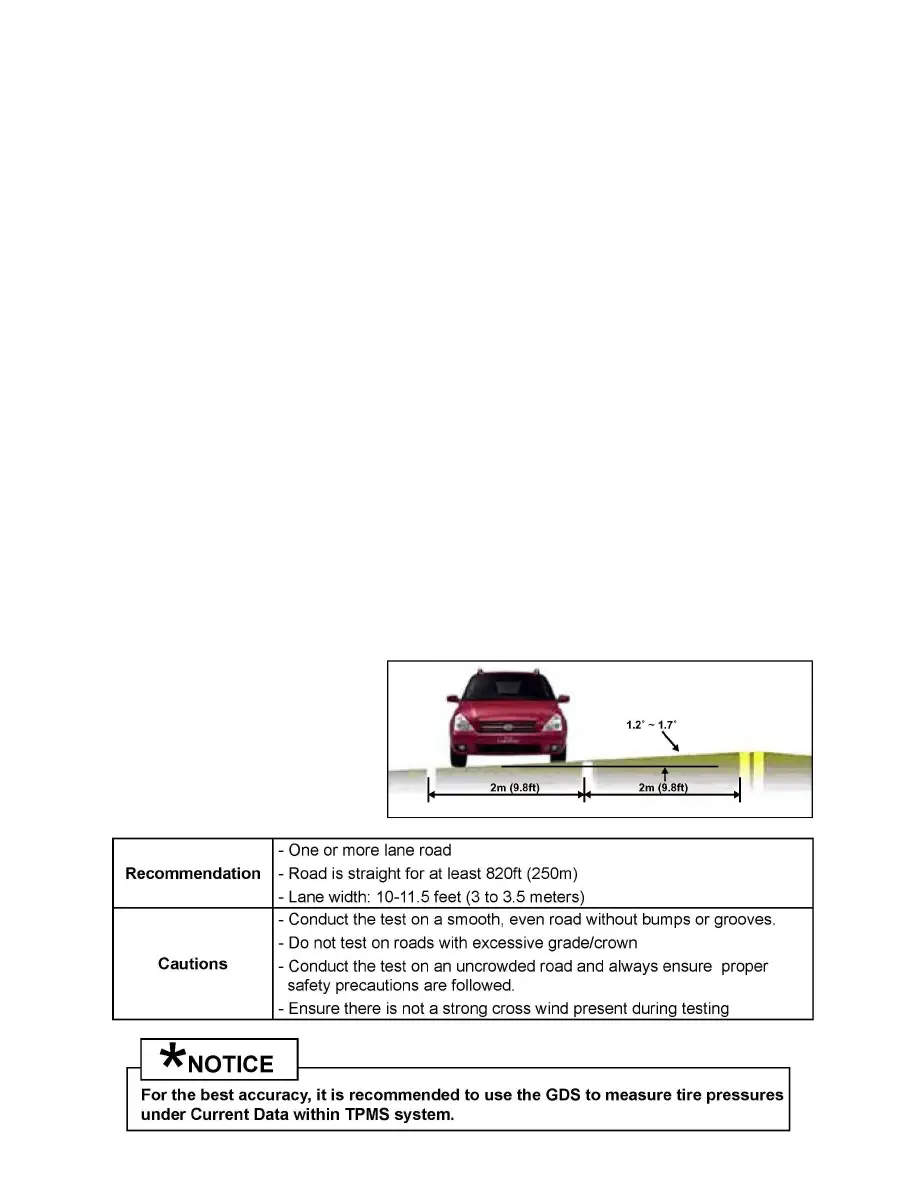Sorento 4WD V6-3.5L (2011)

a. Camber - A vehicle will drift or pull towards the side with more positive front camber. Camber difference between the front tires greater than 0.5
degrees can lead to a drift pull concern.
b. Caster - A vehicle will drift or pull towards the side with the least positive caster.
c. Steering Axis Inclination (SAI) - The angle formed by the line drawn through the steering pivot axis and a line at true vertical when viewed from
the front of the vehicle. SAI is designed into a vehicle's suspension and aids straight-line stability. This angle can be measured by the alignment
machine. For Hunter units, it is measured during the caster sweep process. It is useful for checking for damaged components when the SAI
difference between left and right sides is more than 1 degree. If SAI is lower on one side of the vehicle it may indicate a bent lower control arm. If
SAI is higher on one side of the vehicle it may indicate damage to the upper strut mount.
d. Thrust angle - This is the direction the rear axle is pointing as a result of the rear toe angles and results in the steering wheel being off-center. To
avoid this situation, rear camber and toe should be adjusted before the front when performing a four wheel alignment. After the rear is set, center
the steering wheel, lock it in place, then adjust the front camber, caster, and toe (if applicable).
3. Tires - Tires can have significant effect on vehicle drift or pull for the following reasons:
a. Ply steer - Ply steer is an inherent characteristic in a tire which results in a lateral force as the tire rolls. Rotating the tires from side to side may aid
in cancelling out the effects of ply steer and can aid in diagnosing a ply steer concern.
b. Conicity - Tire conicity refers to the shape of the tire and how cone shaped it is. This can influence vehicle drift or pull. Conicity can be present in
a new tire due to manufacturing, or in a used tire due to camber wear. Rotating tires may reduce a vehicle pull concern due to tire conicity.
4. Road Crown - Road Crown is the slope of a road surface to ensure proper drainage. Excessive Road Crown can cause a vehicle to drift to the low
side of the crown.
5. Cross Wind - Excessive cross winds can cause a vehicle to pull or drift. If the Winds are excessive it can skew the test results.
Other issues can cause vehicle drift or pull, such as brake drag, spring sag resulting in ride height differences, cargo load/weight distribution, and more.
It is important to consider all potential effects when diagnosing and confirming a vehicle drift or pull condition. Understanding the factors that affect
vehicle drift or pull can help to determine the root cause.
HOW TO DETERMINE VEHICLE DRIFT OR PULL
To confirm a vehicle drift or pull, use the following procedure:
